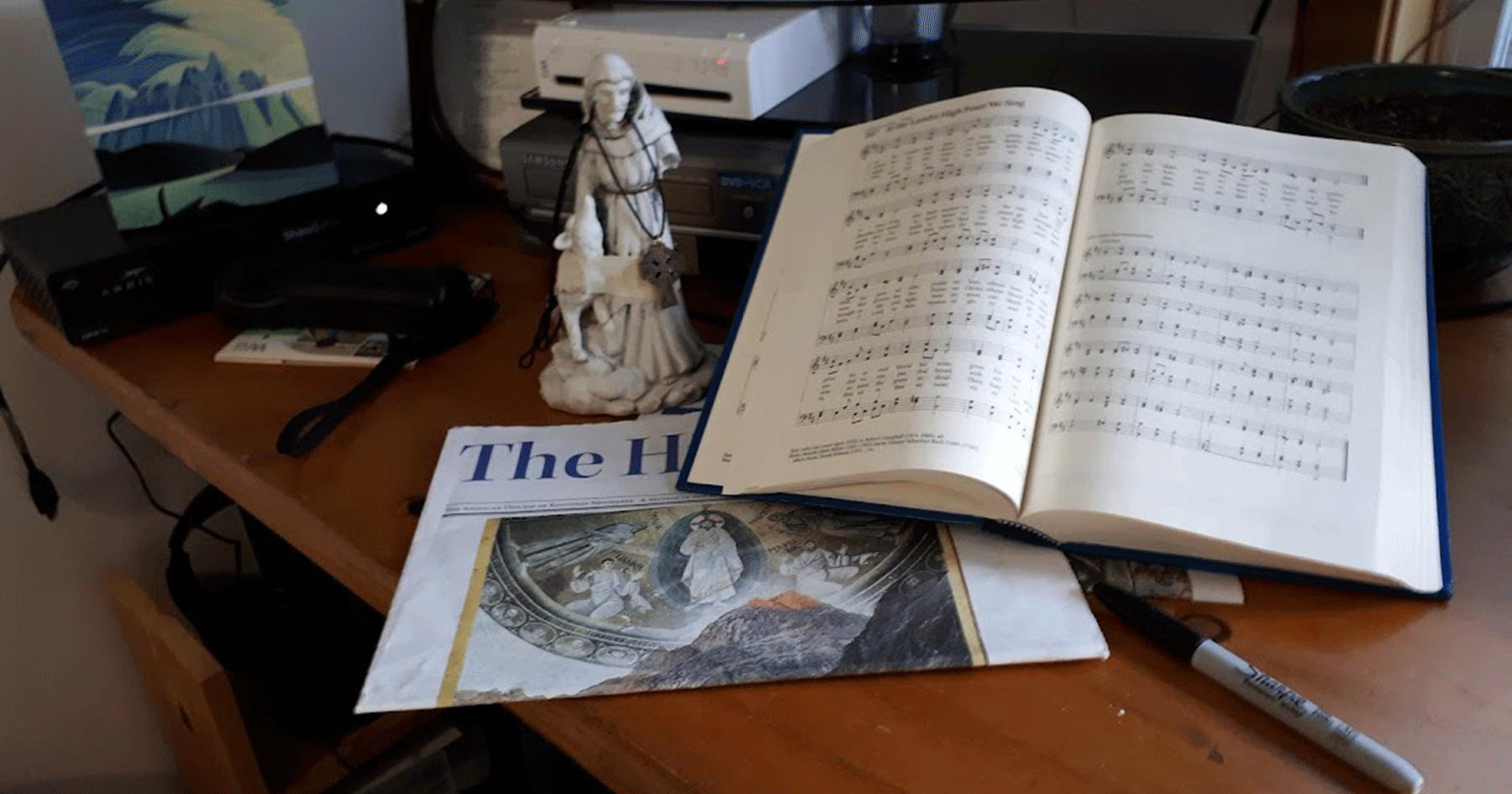The subject of this month’s article is geared toward those who lead or have input into the selection of music for their parish, but all are welcome to read on and learn about what goes on behind the scenes in a music ministry.
Having attended a variety of churches in my life and watched worship services online, I have noticed that music resources vary from parish to parish. Some use Common Praise or another hymnal, exclusively, while others supplement their hymnbook with additional resources. At St. George, our congregation does not sing from hymnbooks at all. Instead, we subscribe to an annual copyright license that allows us to reprint hymn texts in our weekly leaflet because the selections we sing come from various sources, including Common Praise (CP), Voices United (VU), Sing a New Creation (SNC) and More Voices (MV).
If the same hymn is in more than one book I always compare them for key, language, and accompaniment. If a title in one book is in a better key for congregational singing or the language is more inclusive, I will use that version. With regard to the accompaniment, some hymnbooks may have a better arrangement or a better visual layout.
Generally speaking, when it comes to things like inclusive language in traditional hymns, I find that VU is more up to date than CP. This is due to the fact that CP came out in 1998, while VU was revised in 2007. If there is no difference in the text, I reference CP because I prefer to use the official hymnbook of the Anglican Church of Canada. However, if most of the hymns we will be singing on a particular Sunday come from one book, I will choose the source that creates the least amount of book juggling for the choir and accompanist.
Songs for a Gospel People, ©1987 and Spirit Anew, ©1999 are two favourite older resources that I only use occasionally, because many of their most popular songs can now be found in VU. As for newer sources: Sing a New Creation, ©2022, and More Voices, ©2007 are wonderful supplements to CP and VU respectively. They include hymns by newer composers and songs from a variety of countries and cultures, with little overlap between them.
Even with all these resources at hand I still sometimes get stumped when searching for hymns. This is when I make use of the various subject indices. Each denomination has its own way of organizing their hymns and will label their subject headings differently.
Comparing CP and VU again, I often find that VU has so many more subject headings, which has led me to find hymns I never would have considered.
After re-reading my words it sounds like I am favouring VU over CP. That is not the case, but I do find it to be a very useful tool in my planning. In fact, along with the other previously mentioned books, I have a collection of resources from various faiths that give me inspiration.
Even if your parish only uses one hymnal it is still possible to find great material to sing. You just have to look for it. Try periodically playing through your hymnbook page by page. You may be surprised to discover a gem that you previously missed. Another suggestion would be to consider occasionally purchasing a single/multi use license from the publisher of a particular hymn (not found in your hymnal) that your parish may want to sing. For example, if the congregation enjoys the music of Common Cup Company, you can go to their website, download, and purchase a single title for as little as $10 (US funds). My point is that music leaders should take advantage of whatever resources they can in order to support and enrich the worship experience.




